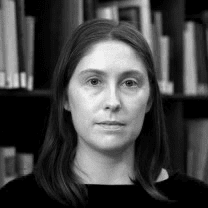Kathryn Moore
Associate Professor of Art History
Kathryn Blair Moore received her PhD in art history from the Institute of Fine Arts, New York University, and has previously taught at the University of Pittsburgh, the University of California, Berkeley, the University of Hong Kong, and Texas State University. Her teaching spans the medieval and Renaissance periods in Europe and the Mediterranean region. Her courses include Italian Renaissance Art, Islamic Art, The Early Illustrated Book, and Global Jerusalem. She created the Global Jerusalem course and related project site with the support of the University of Connecticut’s Greenhouse Studios and the Provost Office’s General Education Course Enhancement program. The Global Jerusalem project investigates the role of art in shaping beliefs about the place of Jerusalem within the global scope of Judaism, Christianity, and Islam. The Global Jerusalem project also engages with questions about the role of technology in the experience and perception of the city of Jerusalem. Her recent publications include a related article in Studies in Digital Heritage on the early modern precedents for digital virtualizations of Jerusalem’s architecture.
The Global Jerusalem project grew out of her first book, The Architecture of the Christian Holy Land: Reception from Late Antiquity through the Renaissance (Cambridge University Press, 2017), which explored how and why representations of the architecture of the Holy Land were used to express changing notions of sanctity and affective piety (particularly in regards to materiality, spatiality, and embodied experience) across a wide range of media, from illustrated books and paintings to buildings and sculptural installations. The book placed these representations of the architecture of the Holy Land within changing social and political contexts, from anti-Islamic crusading movements to the emergence of the Mendicant orders and Reformation, especially as a way of illuminating how changing perceptions of Islamic cultures informed European recreations of buildings in Jerusalem, Bethlehem, and Nazareth. The book received a Prose award in art history / criticism, the Medieval Institute’s Otto Gründler Book Prize, and the Sharon Harris Book Award from the UConn Humanities Institute.
Her broader interest in re-examining the history of Islamic architecture informed her essay on the Dome of the Rock, published in a two-volume study of Islamic religious architecture, which she co-edited with Hasan-Uddin Khan. These two volumes, The Religious Architecture of Islam. Volume 1: Asia and Australia and The Religious Architecture of Islam. Volume 2: Europe, Africa, and the Americas (Brepols, 2020-21), together consist of 59 essays by 48 authors. The volumes draw attention to previously neglected regions in Europe, China, Africa, and the Americas, where buildings created for Islamic worship of various kinds existed in culturally, ethnically, and religiously heterogenous spaces.
She is currently co-editing an interdisciplinary journal issue on The Tree of Life, that grew out of a two-day conference held at the University of Connecticut’s Humanities Institute in 2023. With support from the Office of Global Affairs and the Abrahamic Programs at the University of Connecticut, she invited scholars from a range of fields, including religious studies, art history, literature, plant sciences, and evolutionary biology, to discuss the importance of the concept of the Tree of Life across different religions, artistic traditions, and scientific disciplines. The presentations can be viewed on YouTube.
She is also currently writing a second monograph on the emergence and development of the concept of the arabesque in a European context. The concept of arabesques has long been central to writing the history of Islamic art, yet the origins of the term in the Italian Renaissance is a poorly understood aspect of art history. The book aims to expand our understanding of the significance of Arabic culture and Islamic art within Europe, and to create a new historical context for understanding the relationship between different media and cultural techniques – including architectural inscription, panel painting, calligraphy, and embroidery – that often remain separated in historical studies. Her research for this book has been supported by a senior fellowship at the Center for Advanced Study in the Visual Arts at the National Gallery of Art in Washington, D.C., a fellowship at Harvard University’s Villa I Tatti in Florence, and a Franklin Research Grant from the American Philosophical Society.
